Apr’21 cotton yarn imports may move down 15.4% m-o-m to 177kt
1. Imported cotton yarn arrivals to China assessment
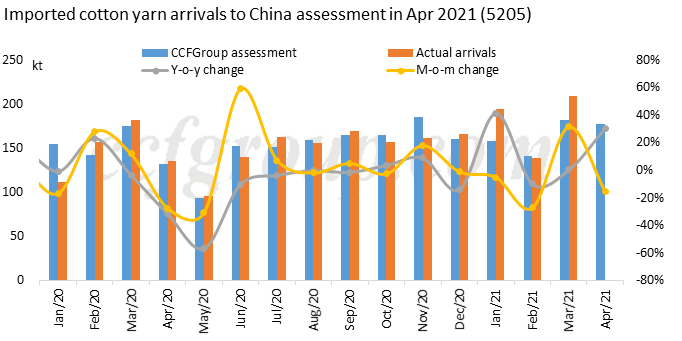
Cotton yarn imports of China in Mar reached 209.4kt, up 15.1% on the year and 51% on the month. It amounted 543kt cumulatively in the first quarter, up 20.5%, and Mar imports contributed the most. The imports in Apr is estimated lower than that in Apr, but higher than that in Feb. It is initially assessed at 177kt, up 30.5% on the year and down 15.4% on the month.
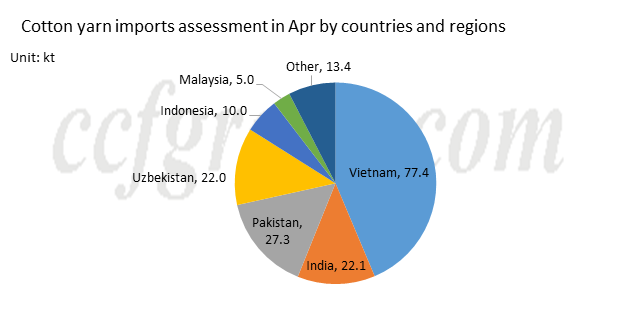
According to foreign shipment data in Mar, cotton yarn imports of China from Vietnam in Apr is estimated at 77kt; from Pakistan 27kt, from India 22kt, from Uzbekistan 22kt, from Indonesia 10kt, from Malaysia 5kt, and from other regions and countries 13kt.
2. Traders’ reflection
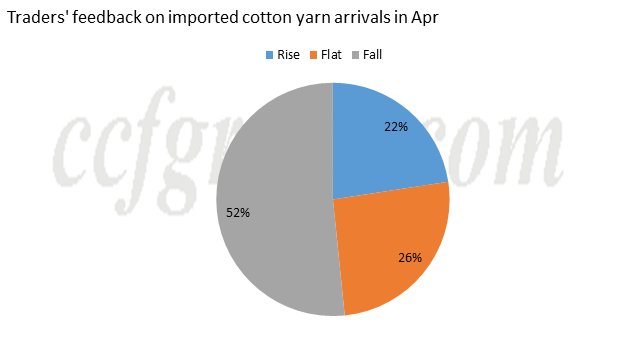
Note: Over 30 enterprises are surveyed, covering over 50% of cotton yarn imports.
Major traders and L/C issuing companies expected that Apr arrivals will be lower.
3. Imported yarn stocks and supply and demand outlook in May
After intensive arrival of imported cotton yarn in Mar, Apr arrivals are likely to decline. It is mainly due to less orders in Feb-Mar, and previously delayed cargos having arrived in Mar. The stocks of imported cotton yarn in early Apr showed uptrend and gradually declined in mid- to late Apr under reduced arrivals and better sales. The offers of imported cotton yarn increased in mid- to late Mar and the traded price followed up gradually. Low prices of siro-spun cotton yarn disappeared gradually and prevailing price moved up, and ring-spun one showed the same trend. Open-end one was worse than others.
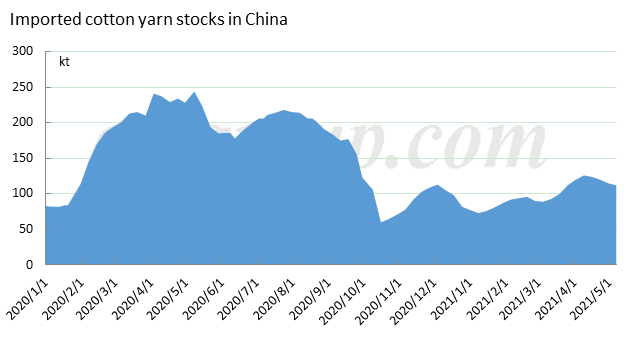
Downstream demand for imported cotton yarn improved in Apr. Jiangsu and Zhejiang markets performed better than Guangdong. The operating rate of downstream weavers using imported cotton yarn experienced rise, fall and rise successively. By end-Apr, it reached 68.8%. From May Day to date, Guangdong market has recovered quickly.
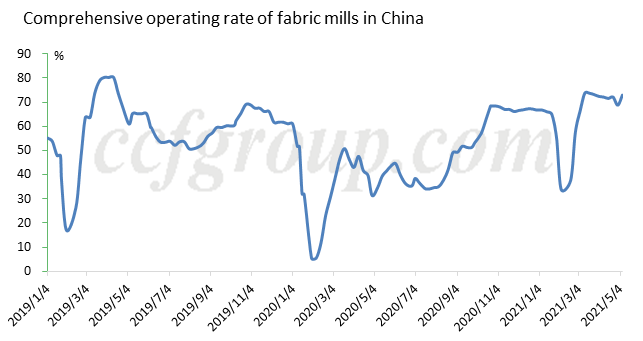
In terms of different regions, in Lanxi, weavers ran at high rate and their inventory was also high. The sales quickened after May Day holiday. In Foshan of Guangdong, the operating rate was low in Apr, and it rose slightly after May Day holiday as the orders increased gradually. In Nantong, the operating rate improved as home textile market turned better. In Weifang, small and medium-sized weavers suffered losses due to lack of orders and they did not operate actively. On the whole, comprehensive operating rate of weavers moved up slightly as weavers ran at high rate in Guangdong, Nantong and Gaoyang, except that in Weifang has not recovered to pre-holiday level.
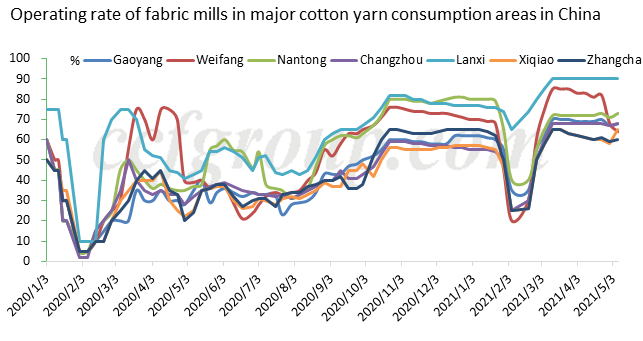
As things stand, Apr arrivals are likely to reduce compared with Mar ones. How about May arrivals? In terms of ordering time, the cargos to arrive in May were mainly ordered in Mar-Apr, though a small amount of Indian and Pakistani cotton yarn with end-May shipment was still sold in early May. On the other hand, the price of spot imported cotton yarn was in downtrend in Mar and lower than forward one, so the ordered quantity was less, and in Mar-Apr, there was short procurement opportunity for Indian and Vietnamese cotton yarn, but the procurement volume was small. As a consequence, May arrivals may decline further. In addition, the sharp appreciation of renminbi largely reduces settlement cost of imported cotton yarn and traders gain better profits.
- Top keywords
- Cotton Price
- Cotton Futures Price
- Cotton Futures
- CZCE
- PTA Futures Price
- Chemical Fiber
- Polyester Prices
- Wool price
- PTA Futures
- Shengze Silk
- China
- Yarn Price
- price
- China Textile City
- Fibre Price
- Benzene Price
- Cotton
- Index
- Cotton Index
- PTA
- fabric price
- NYMEX
- Top 10
- textile industry
- Spot Cotton
- Cotton Yarn
- Polyester Price
- Futures
- PTA Price
- cotton yarn price

